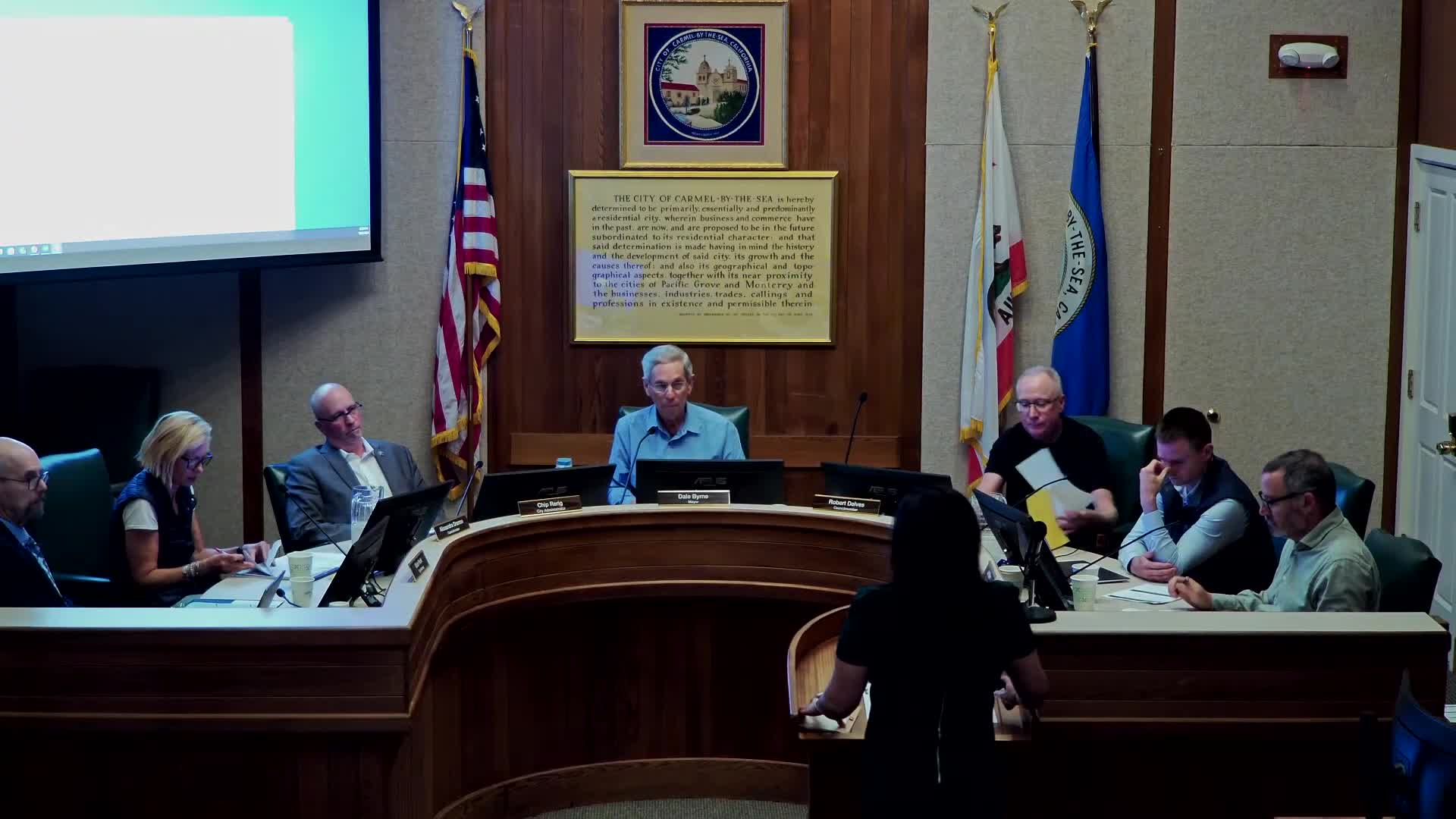Carmel City Council Considers Future of Mills Act Amid Contract Controversies
October 07, 2025 | Carmel-by-the-Sea, Monterey County, California
This article was created by AI summarizing key points discussed. AI makes mistakes, so for full details and context, please refer to the video of the full meeting. Please report any errors so we can fix them. Report an error »

In the heart of Carmel-by-the-Sea, city council members gathered under the warm glow of the city hall lights to address a topic that has lingered in discussions for years: the Mills Act program. This program, designed to provide tax relief for the preservation and maintenance of historic properties, has been on hold as the council navigates outstanding requests and seeks a path forward.
Mayor Baron opened the meeting with a sense of urgency, acknowledging the prolonged discussions surrounding the Mills Act. "We really just need to open the discussion and get us all back up to speed," he stated, setting the tone for a collaborative dialogue. The council members were eager to explore options, whether to continue the program as it has historically operated or to terminate it for new and existing contracts, thereby eliminating uncertainty for property owners.
Anna Jannett from the Community Planning and Building department presented a comprehensive overview of the Mills Act, highlighting its inception in 1972 as a state initiative aimed at encouraging the rehabilitation of historic structures. While the act provides significant tax incentives, local jurisdictions like Carmel-by-the-Sea have the discretion to adopt or modify the program to suit their needs. The city officially embraced the Mills Act in 2004, but the current pause has left many stakeholders in limbo.
As the meeting progressed, the council members engaged in a thoughtful exchange, weighing the benefits of the program against the complexities of its implementation. With the presence of Jerry Gapp from the County of Monterey Assessor's Office via Zoom, technical questions regarding property tax implications were addressed, ensuring that all aspects of the discussion were thoroughly examined.
The council's deliberations reflect a broader commitment to preserving the unique character of Carmel-by-the-Sea while navigating the challenges that come with maintaining historic properties. As the meeting concluded, it was clear that while a definitive resolution may not have been reached, the dialogue initiated a renewed focus on the future of the Mills Act program and its role in the community's heritage. The council's next steps will be crucial in determining how they balance preservation with practicality, leaving residents and property owners eager for clarity in the months to come.
Mayor Baron opened the meeting with a sense of urgency, acknowledging the prolonged discussions surrounding the Mills Act. "We really just need to open the discussion and get us all back up to speed," he stated, setting the tone for a collaborative dialogue. The council members were eager to explore options, whether to continue the program as it has historically operated or to terminate it for new and existing contracts, thereby eliminating uncertainty for property owners.
Anna Jannett from the Community Planning and Building department presented a comprehensive overview of the Mills Act, highlighting its inception in 1972 as a state initiative aimed at encouraging the rehabilitation of historic structures. While the act provides significant tax incentives, local jurisdictions like Carmel-by-the-Sea have the discretion to adopt or modify the program to suit their needs. The city officially embraced the Mills Act in 2004, but the current pause has left many stakeholders in limbo.
As the meeting progressed, the council members engaged in a thoughtful exchange, weighing the benefits of the program against the complexities of its implementation. With the presence of Jerry Gapp from the County of Monterey Assessor's Office via Zoom, technical questions regarding property tax implications were addressed, ensuring that all aspects of the discussion were thoroughly examined.
The council's deliberations reflect a broader commitment to preserving the unique character of Carmel-by-the-Sea while navigating the challenges that come with maintaining historic properties. As the meeting concluded, it was clear that while a definitive resolution may not have been reached, the dialogue initiated a renewed focus on the future of the Mills Act program and its role in the community's heritage. The council's next steps will be crucial in determining how they balance preservation with practicality, leaving residents and property owners eager for clarity in the months to come.
View full meeting
This article is based on a recent meeting—watch the full video and explore the complete transcript for deeper insights into the discussion.
View full meeting
